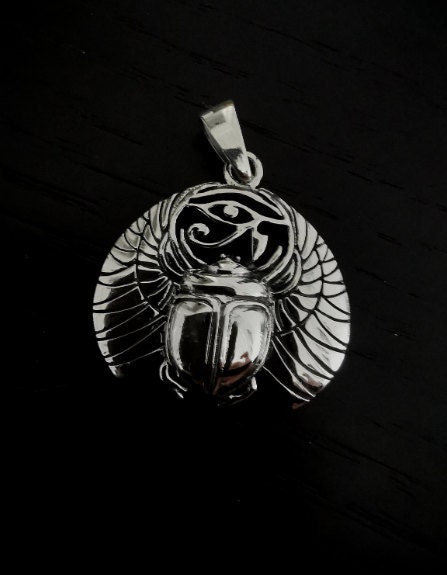The scarab beetle belongs to the family Scarabaeidae, a diverse group of insects found in many parts of the world. The species most commonly associated with ancient Egypt is the dung beetle, particularly Scarabaeus sacer. These beetles are known for their remarkable behavior of rolling balls of dung, which they use for food storage or as a nest for their eggs. This act of rolling and burying dung fascinated the ancient Egyptians, who saw in it a parallel to the movement of the sun across the sky. The beetle’s daily activity of pushing a sphere symbolized the journey of the sun god Ra, making it a natural representation of cosmic order and renewal.
In ancient Egypt, the scarab was more than just a natural wonder—it was a sacred symbol with deep religious and cultural significance. Egyptians associated the beetle with the god Khepri, a deity linked to the rising sun and the cycle of life, death, and rebirth. Khepri was often depicted as a man with the head of a scarab or as a scarab rolling the sun across the heavens.Scarabs were widely used as amulets, believed to offer protection and blessings to their wearers. These amulets were crafted from materials like faience, stone, and precious metals, often inscribed with prayers, names, or spells. They were commonly placed on the deceased during burial to ensure safe passage into the afterlife. The famous “heart scarabs” were particularly significant; they were inscribed with a spell from the Book of the Dead instructing the heart not to testify against the deceased during judgment by the gods.
Although the scarab is most closely associated with ancient Egypt, its influence can be seen in other cultures as well. The Phoenicians, who traded extensively with Egypt, adopted scarab-shaped seals as a mark of identity and authority. Similarly, scarab-like motifs appeared in Greek and Roman art, where they were admired for their exotic appeal.In modern spiritual practices, the scarab continues to symbolize transformation and self-renewal. Many people wear scarab jewelry or tattoos as a reminder of personal growth and resilience. The beetle’s ability to create life from decay serves as an inspiring metaphor for overcoming challenges and embracing new beginnings.
The fascination with scarabs has not diminished over the centuries. They frequently appear in literature and films, often associated with mystery, magic, and ancient wisdom. For example, in adventure stories and films such as The Mummy franchise, scarabs are depicted as supernatural creatures linked to Egyptian mythology. While these portrayals may be exaggerated, they reflect the enduring mystique of the scarab in popular imagination.Artists and designers continue to incorporate scarab motifs into their works, drawn to their aesthetic appeal and symbolic depth. Fashion designers, jewelers, and even tattoo artists use scarabs to convey themes of regeneration and eternity. Museums around the world display ancient scarab artifacts, allowing modern audiences to appreciate their historical and artistic significance.
The scarab remains a timeless symbol, bridging the ancient and modern worlds with its powerful message of transformation and renewal. From the sunlit sands of ancient Egypt to contemporary fashion and spirituality, this small beetle continues to inspire awe and reverence. Whether worn as an amulet, admired in a museum, or recognized in nature, the scarab reminds us of the cycle of life and the endless possibilities of rebirth. Its legacy proves that even the smallest creatures can hold the greatest significance in the human story.


